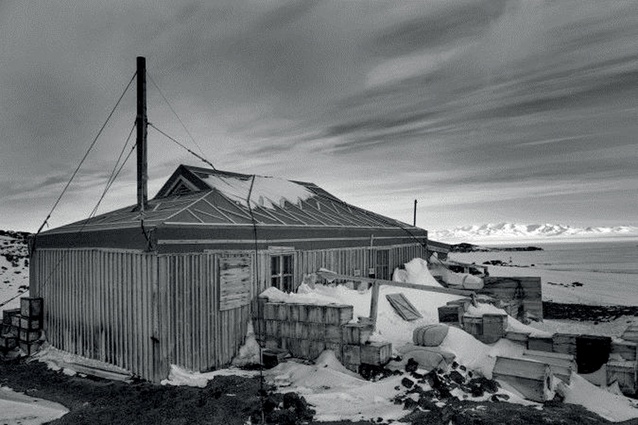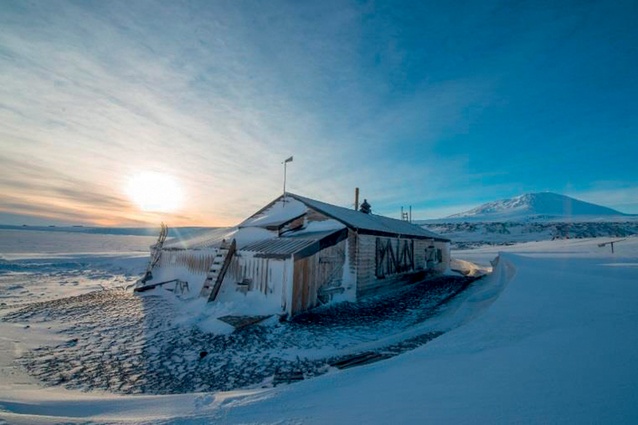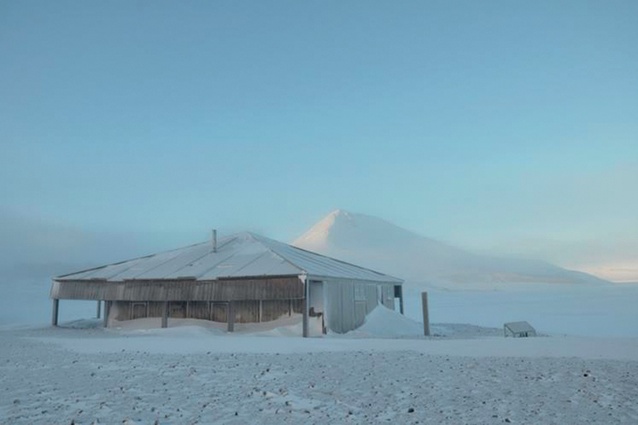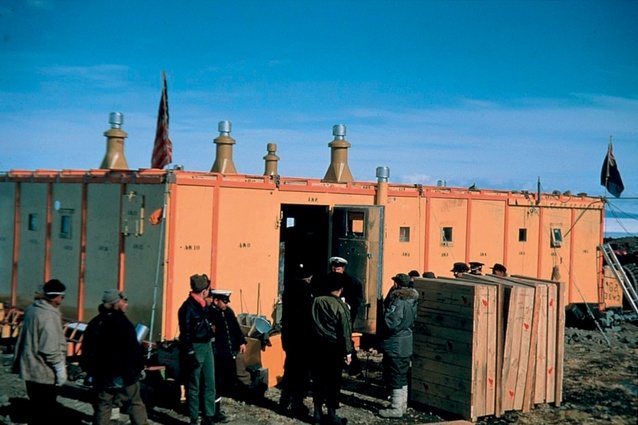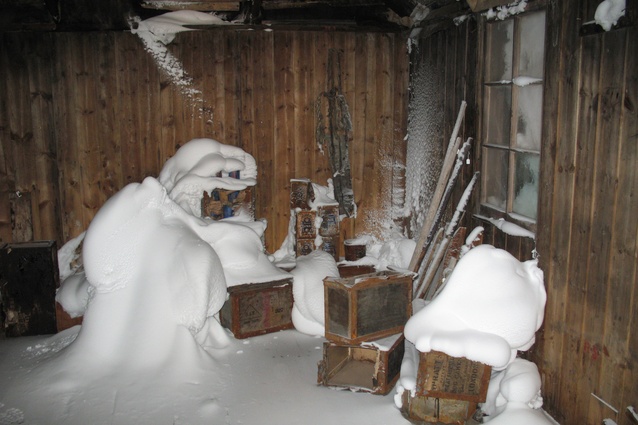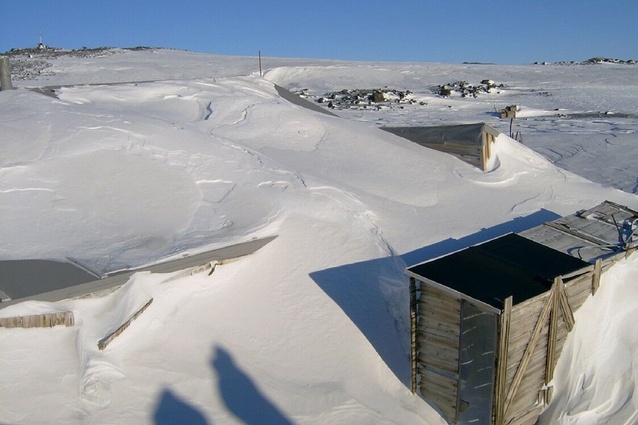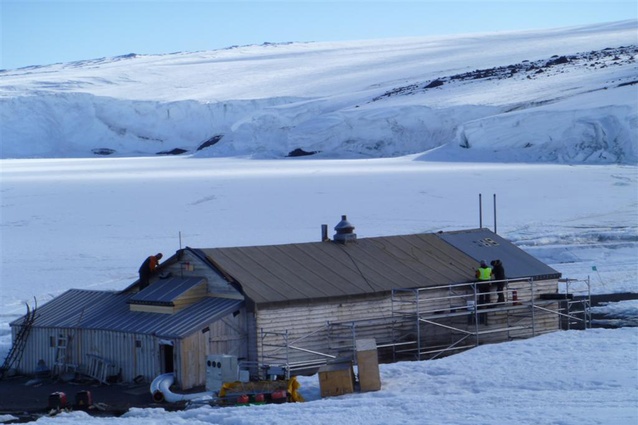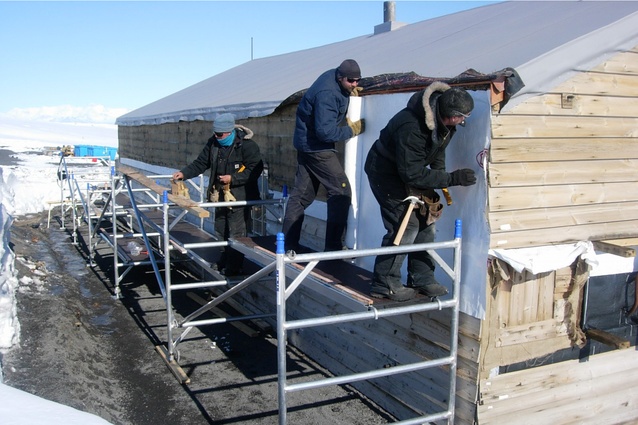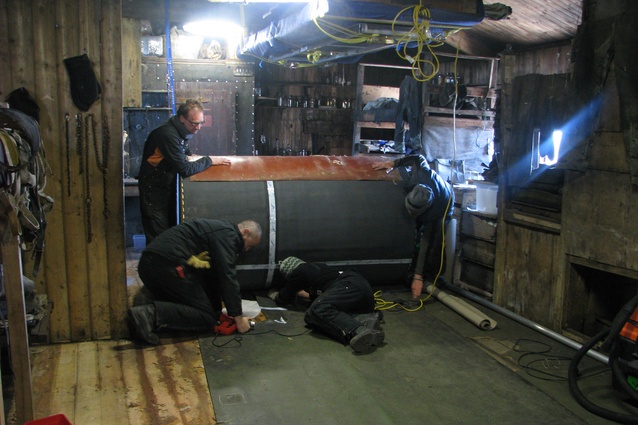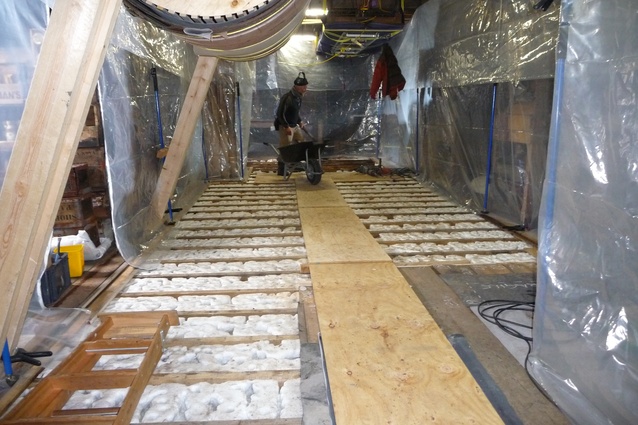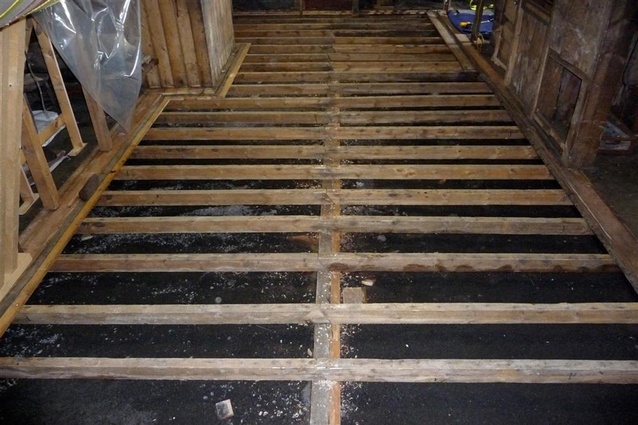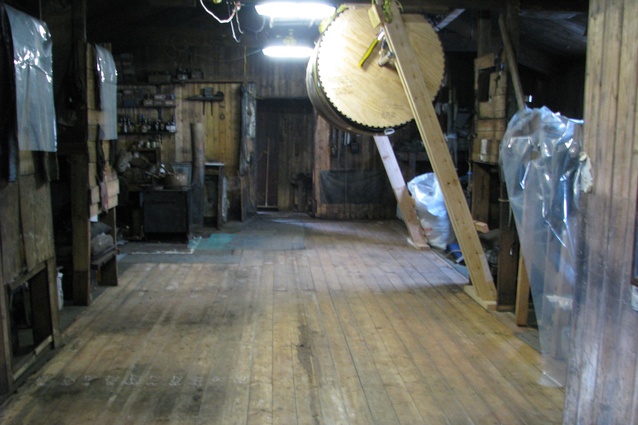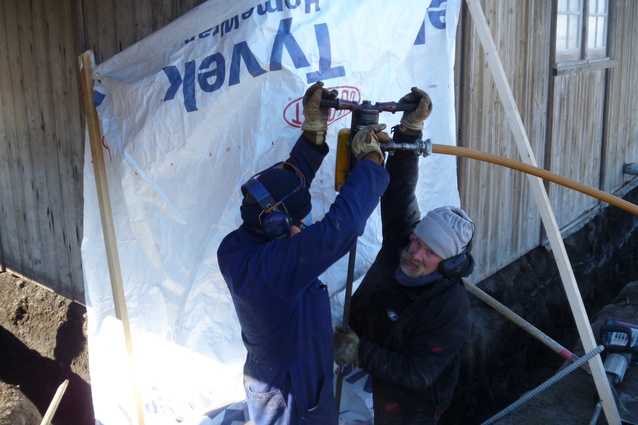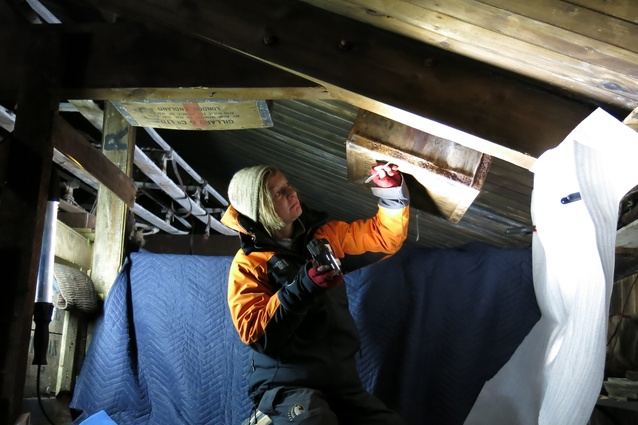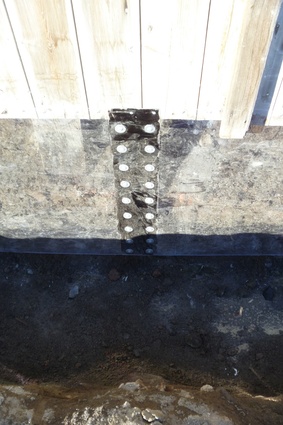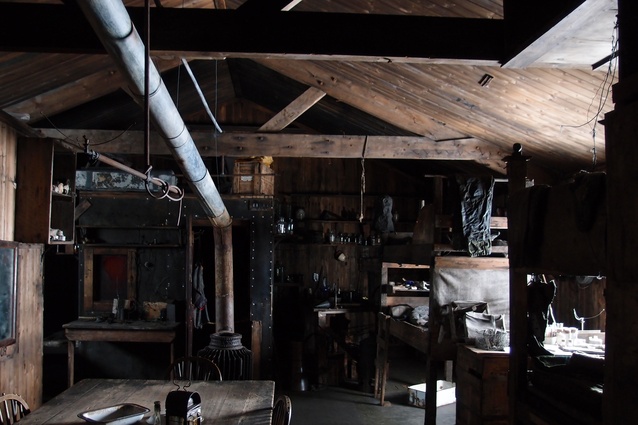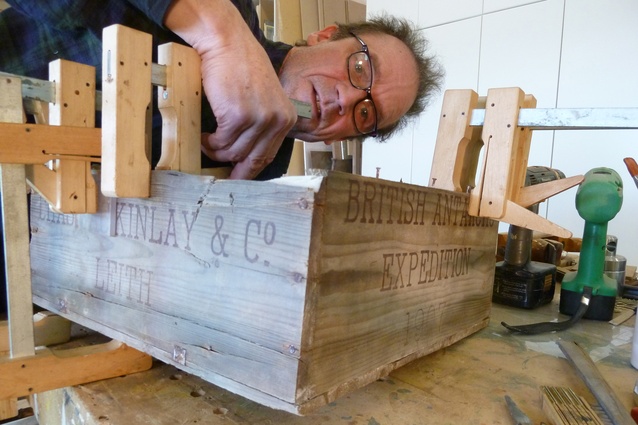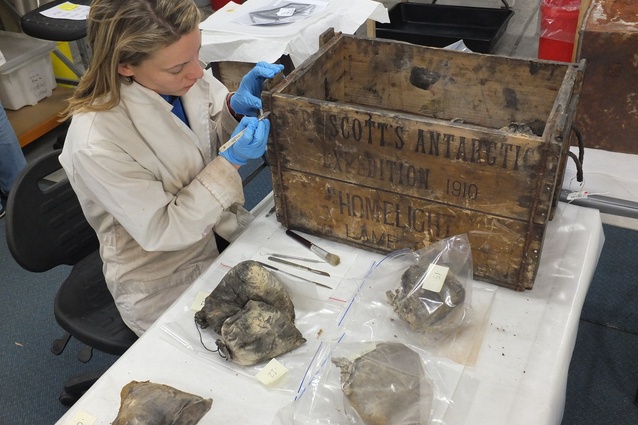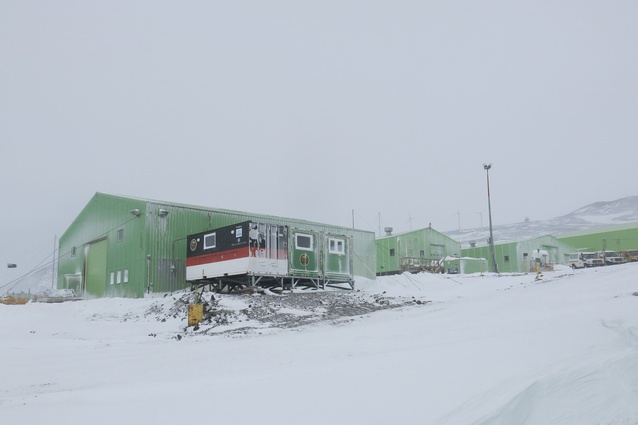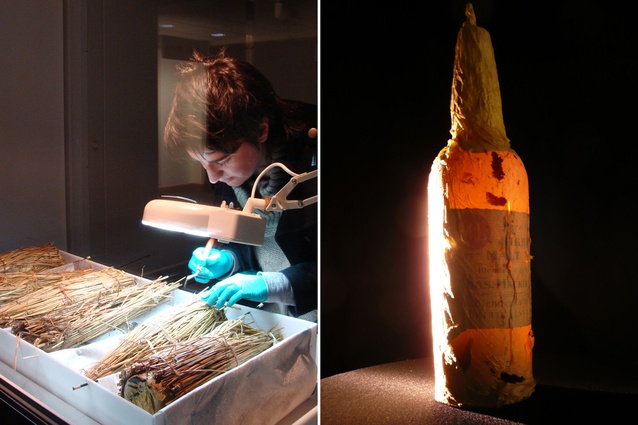Extreme Conservation: Antarctic Huts of the Heroic Age
Bill McKay discovers the historic huts left behind from previous Antarctic explorers’ efforts to reach the South Pole, now painstakingly restored by the Antarctic Heritage Trust (NZ).
See the introduction to the Antarctica series here and a timeline of the history of architecture on The Big Ice here.
The antipodes have long fascinated Western explorers. European maps of the 16th century, such as those of Ortelius, show a south polar continent. But it is not Antarctica, it is ‘Terra Australis Nondum Cognita’, the Great Southern Land not yet known; it was thought to exist in order to counterbalance the great land masses of the northern hemisphere.
Tasman believed he had touched a section of it when he came across New Zealand in 1642 and one aim of Cook’s voyages the following century was to find or disprove the existence of the great southern continent.
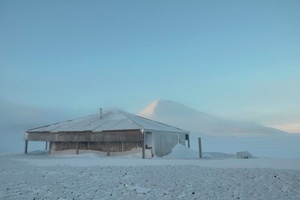
Many others explored the Antarctic region but it was the race to be first to the South Pole that most vividly caught the public imagination in the early 20th century. It was a bit like the space race of the ’60s, with national pride at stake.
And New Zealand played a role in all of this as the last stopping-off point for many of those explorers because we are north of the Ross Sea. Its huge bite out of the continent allowed ships with men and provisions to land as close as possible to the South Pole.
After the period of Amundsen, Shackleton, Scott and others, there were intermittent expeditions by a number of nations but two world wars and the intervening Great Depression preoccupied most of the world – although the United States built a few ‘Little America’s on the ice. The widespread permanent occupation of the continent by scientists dates from the International Geophysical Year (IGY) of 1957 to 1958. It kicked off the building of stations by a variety of nations, such as the American McMurdo on Ross Island and Amundsen–Scott at the South Pole.
The Commonwealth Trans-Antarctic Expedition (TAE) of 1955 to 1958, in which Sir Ed Hillary was involved, led to the establishment of New Zealand’s Scott Base (also on Ross Island, not far from McMurdo) to a design by Ministry of Works architect Frank Ponder. It was a logistical feat that was, for little old New Zealand, almost the technological equivalent of a moon landing.
Hillary’s job was to lay supply depots for the TAE, led by Vivian Fuchs, but he pushed on (using Massey Ferguson tractors – there used to be one on the $5 note) and made it to the Pole, the first to reach it overland since Amundsen and Scott in 1911 and 1912 respectively.
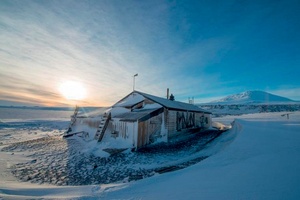
Today, you will find the bases of many nations on the continent and increasing numbers of tourists visiting by ship. Also, those early huts of the Heroic Age, built to last for only a couple of seasons are still intact after a century and in need of some care.
The Antarctic Heritage Trust (NZ), or AHT(NZ), has completed major conservation work on the expedition bases of the early 20th-century explorers, including Borchgrevink, Scott and Shackleton, and, more recently, Hillary, as well as the 20,000-plus artefacts they left behind.
Architects Pip Cheshire and Chris Cochran have been involved in the conservation of these early huts, as well as Hillary’s TAE/IGY hut, the first at Scott Base, working alongside the AHT(NZ)’s executive director, Nigel Watson, programme manager, Al Fastier, and artefact conservation manager, Lizzie Meek, and other key personnel doing the work on the ice.
This is conservation in very difficult circumstances: “extreme conservation and implementation” as Cochran puts it. There are the extreme climate and the difficult working conditions, and a great deal of thought is needed in the design process and the logistics of supplying workers and materials to remote and inhospitable sites. The nearest building supplies shop is 3,500km away, assuming the Four Square on Stewart Island sells nails.
Cochran’s role was primarily as lead author in the creation of conservation plans while Fastier was lead author of implementation plans. Cheshire’s role was as project architect. All team members spent ‘hours’ discussing design, developing details and considering implementation options. Different methods of analysis and communication, such as photogrammetry, have also been used.
Both architects speak highly of Fastier’s combination of imagination and realism in his planning and the importance of Meek and her team’s work in the conservation of artefacts, since they are a crucial aspect of the heritage.
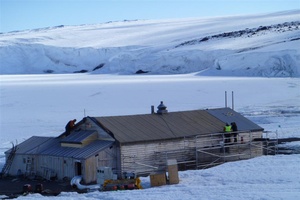
Cheshire took on his role when previous heritage consultant Adam Wild left Jasmax back in the early days of 2002. Cheshire says he asked “dumb questions” at the beginning, such as: “What are we doing here? Conserving, preserving, restoring…?” “Would an approach of minimal, least-invasive processes work in an environment in which the huts have to be dug out of the snow each spring? Or should you just put a dome over them?”
Although all the huts have had some use over intervening years since their first construction, it was decided to conserve the four Heroic Age huts to the way they were at the moment when the last occupants of that era left. The first of these was Borchgrevink’s Hut at Cape Adare, dating from an 1898-to-1900 expedition.
I hadn’t heard of Borchgrevink either, but he was an Anglo-Norwegian who led his British expedition and is said to be one of the first people to stand on the continent in 1894 when he came ashore with a whaling party. Better known (and using the names of their ships, since official titles were always ‘British Antarctic something’) are the huts of Scott’s Discovery Expedition (1901–1904), Shackleton’s Nimrod Expedition (1907–1909) at Cape Royds and Scott’s Terra Nova Expedition (1910–1913) at Cape Evans.
All these huts are in the Ross Sea on a slice of the continent claimed by New Zealand, the Ross Dependency, although few nations recognise Antarctic claims. Like McMurdo Station and Scott Base, the last three huts are on Ross Island.
The Trust’s first job was Shackleton’s Hut (in which Wild was project architect) and all the huts have posed different challenges; for instance, Discovery Hut (or Disco as it’s known in Antarctic lingo – believe it or not, a dictionary has been published) was a prefabricated Australian outback hut, complete with sun screens, which was, nevertheless, specially designed for the conditions.
Hillary’s TAE/IGY Hut was, of course, much later and better built but constructed from sandwich panels, the composition of which was somewhat mysterious. Cochran makes a special case for recognition of the advanced design of this hut (and Scott Base) as it was “one of the first properly designed for the conditions and it received strong endorsement from the Americans and others”.
Although it had important guidance from the Australians, who had built Mawson Station elsewhere on the continent in 1954, it was innovative at a time when Fuchs and the British component of the TAE were still struggling with timber framing on the other side of Antarctica in the Weddell Sea.
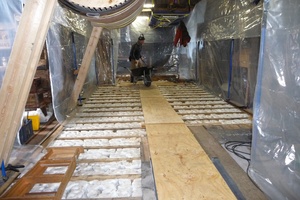
The Antarctic climate is bad enough but, in addition, most of these huts were built on beaches, increasing their risk of peril from the sea and monster waves. The Cape Evans Hut, which has had the most work, rests in a shallow bowl only a metre above mean high water. Antarctic snow is very fine and dry, like talcum powder, and will penetrate tiny gaps while, in summer, it melts and runs through the gravel layer above the permafrost, flowing beneath the floor joists.
Ice under a hut can also sublimate, turning into a gas without going through the water stage, rising into the wall framing where it turns to ice again and expands, distorting the walls. When first opened up after decades, the typical hut was chock-full of ice, with a tongue of ice swelling up under the floor and more ice in the walls.
This all had to be removed without destroying materials or artefacts. Then, remedial measures were installed to prevent its happening again, such as subterranean polycarbonate sheet dams around the huts, extending down to the permafrost, to stop water’s movement down the scoria slope of these beaches and into floor framing.
Cheshire stresses the complex environmental science and engineering issues involved in designing for a cold climate, such as trying to calculate the dew point in a wall when the charts begin only at temperatures well above Antarctica at its most severe. In addition to design conundrums, not all solutions worked in practice as, given the remoteness of sites, trial runs were not always possible.
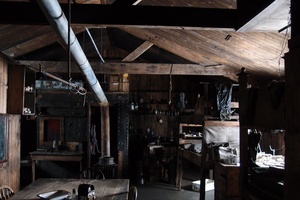
An example of this is Cape Royds Hut, constructed from vertical tongue and groove cladding. Over the past century, the boards had shrunk so much in the dry conditions that the tongues had become exposed, allowing snow to penetrate. The elegant design solution was to rout out the gaps between boards and insert slippery plastic tongues. This proved too difficult on site and, after long debate, the decision was made to put battens over the joints. This was one of the most visually invasive of changes but the argument was that this could be reversed in the future when a better solution was developed.
Not only did the team spend a great deal of time working on conservation solutions such as this, their conservation plans had to be circulated to government agencies and to Treaty nations. For the first one especially, Shackleton’s Hut, comments came in from all around the world.
The nature of the huts’ original construction didn’t help either: built to be temporary, erected by amateurs and with a few experiments, such as seaweed for insulation. In the even-rougher and more-ad-hoc stables and kennels, conservators dealt with pony and dog shit and anthrax spores in the hay. Asbestos was found in the later TAE Hut.
There was one advantage to an Antarctic site, though; when seeking quotes, some contractors were so keen to visit the icy continent, they would practically offer to pay for the opportunity. A lot of sleuthing was required to figure out what these buildings were made of and little invasive testing (even drilling a hole) was permitted.
In the original structures, stacks of Venesta cases (about a third the size of packing cases) were often used as walls, props and weather barriers. These were even more temporary than were the huts themselves but, now, they need to be conserved as well, in position, and in such a way that they represent the place as it was when the last occupant left, but that they will not contribute to further deterioration.
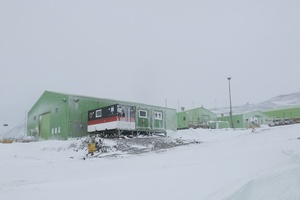
Cochran and Cheshire speak highly of the people involved in the actual work on the ice; for instance, they applaud the extraordinary skills of Gord Macdonald, now of Heritageworks, and Lizzie Meek’s phenomenal work with artefacts, bringing broken jars and rusty cans back to life. Much of this work was carried out in difficult circumstances. Container-based labs and workshops were hauled over ice to sites by bulldozer but, given the distance of many huts from Scott Base, the workers camped on site in tents.
Apart from the climatic and weather issues, there is a further threat to the huts and that is increasing visitation: not just by tourists off cruise ships but by scientists and support staff from the various bases. Although numbers of visitors are limited, data-loggers in the huts spike as visitors enter, warming the places up with their massed bodies and increasing moisture levels with their breaths. And, sometimes, there are souvenir hunters as well.
Cochran and Cheshire have many fascinating stories about this project, which is now well into its second decade. This story has just scratched the surface of the heritage work down there and, as well as that, there are plenty of exciting new buildings going up or recently completed, such as Britain’s Thunderbirds-style Halley VI. It is very clear that the architecture of the Antarctic could do with a lot more attention.
Click here to read an interview with two designers currently working on the redevelopment of Scott Base in Antarctica.
This article first appeared in Architecture New Zealand magazine.


